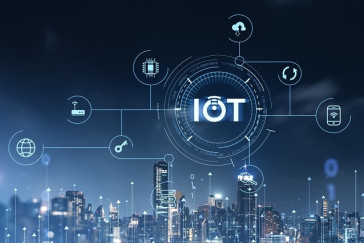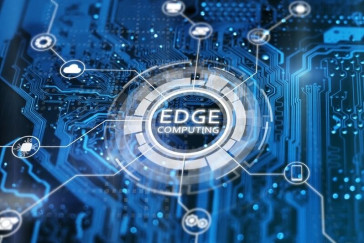Top 10 EdTech Terms Explained
Ever hear some tech terms in conversation and think 'I'll Google that later'? Good news. We've done the leg work for you and compiled a list of the top 10 tech terms that many of us aren't sure of.
- The Cloud
The cloud can be broadly defined as an internet based storage system. You upload content and then you can download it whenever you need, provided you have access to the internet. Google Drive and Dropbox are two familiar examples.
- iOS
iOS is the operating system that Apple iPods and iPhones use. The operating system has also been extended to support other Apple devices including iPad and Apple TV.
- Android
Android is another type of operating system designed primarily for use on touchscreen mobile devices. Unlike Apple's iOS system, Android is an open source software which means software and device manufacturers are free to modify. This permissive licensing is why there are increasing variations of Android devices on the market and has led to the release of low-cost alternatives to Apple's iOS devices.
- Near Field Communication (NFC)
It is becoming more common for devices to have near field communication as this enables the user to send and receive information between devices by merely placing the devices in close proximity. Usually within a few centimeters or directly next to eachother, devices exchange information using radio frequency. An example of this has been the recent release of contactless transactions.
- Tethering
Tethering occurs when the data on a smart phone or tablet is used to run another device such as a desktop or notebook PC. Tethering allows devices to share internet connection, often where the internet-enabled device acts as a wireless route for other devices to connect to.
- Personal Learning Network (PLN)
A PLN occurs when a number of individuals come together online to form an informed group or network. Users connect with one another with the intention that some form of learning will take place as a result. Twitter and LinkedIn offer their user's access to their PLN's.
- Mooc
PLN's have formed the basis for mooc's (massive open online courses). Moocs offer similarities to distance learning courses in that they enable students to learn remotely via the internet. However, mooc's as yet are relatively uncertified and so cannot offer students the academic credit associated with recognised educational institutions and courses.
- LMS
A teacher may use a Learner Management System like Edmodo or Frog to track assignments, record student progress and assess the course delivery or training programme via a facebook-like user-interface. LMSs are web-based, used in learning institutes to support and enhance classroom teaching as well as offer centres the means to manage online student enrolments and course study.
- MDM
The use of mobile technology has grown exponentially in recent years and with many of us owning more than one smart device it's logical that for some individuals a mobile device manager (MDM) will be needed. An MDM can be defined as a software package that makes it easier to configure and deploy devices, push out apps and documents as well as keep an inventory of your device applications.
- The Flipped class or flipped learning
This is a relatively new teaching model that has grown in popularity in the last few years. Flipped learning is a form of blended learning; using audio, video and other technologies that encourages students to try and understand a particular topic or concept prior to the delivery of the lesson. This is most commonly achieved by setting students lesson preparation tasks in the form of video tutorials. LearnersCloud is one of the UK's leading proponents and providers of flipped learning resources offering a range of HD-rich GCSE revision videos that enable students to watch content specific to their exam syllabus on their mobile devices.
Traditionally teaching involves the setting of homework assignments with the intention that the student can demonstrate their understanding of a particular topic or unit following a classroom lesson. Within the flipped model of learning, the responsibility is reversed, the student is assigned and expected to study a topic in preparation for a lesson. This allows the teacher to begin each lesson at a more advanced stage and accelerate learning by testing their understanding and knowledge using problem-solving and collaborative/group exercises.
To read more from this author; follow them @LearnersCloud or visit their blog:Insights from the Cloud
Image credit: Horia Varlan on Flickr
This content was created by AI





